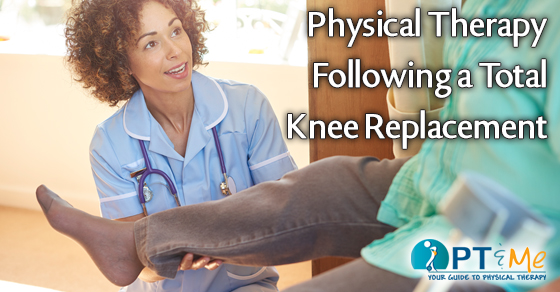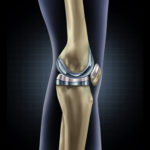
There are over 600,000 total knee replacements done each year in the U.S. As the workforce ages and as obesity levels continue to rise, this number is expected to increase.
Candidates for a knee replacement include patients experiencing difficulty doing simple daily activities, including walking or going down steps, and where conventional treatments are no longer helping. Common causes that lead to a replacement include pain with simple ADL’s (activities of daily living), pain at rest, chronic swelling, inflammation not improving with medication, knee deformity, knee stiffness, or trauma to the joint. When you are scheduled for a total knee replacement, ask to see your physical therapist for a pre¬surgical exercise and stretching program. This will help your knee recover its range of motion and strength.
Surgery consists of resurfacing the knee’s damaged and worn joint surfaces with artificial parts made of metal or plastic. Most patients are in the hospital for an average of 3¬5 days. And more than 90 percent of people report significant decrease in pain and improvement in ability to perform ADL’s within one month after surgery. Currently, many knee replacements are lasting 20 years or more with appropriate activity modification. One of the most important factors in success after a total knee replacement is follow up with physical therapy and a lifelong exercise program. Physical therapy typically starts during the hospital stay with the goals being to get the individual up and walking decreasing swelling in the knee and increasing knee ROM (range of motion). Upon hospital discharge, patients either go home and receive home physical therapy for one to two weeks, or to an extended care facility to continue their therapy.

Typically, patients need outpatient physical therapy after therapy at home, which usually begins two to four weeks after surgery. Outpatient physical therapy is recommended for three times a week for up to three months. Therapy goals initially are to reduce swelling and pain, and improve knee range of motion in both directions. To achieve these goals, treatment may consist of soft tissue massage to increase circulation and decrease swelling, stretching to improve flexibility, patellar mobilization, range of motion exercises, and modalities such as ice and electrical stimulation to help decrease pain and swelling. Physical therapy will progress to lower extremity strengthening exercises, balance activities, and fine tuning the gait pattern. Various activities and techniques will be used to improve strength, balance, and gait. As patients reach the end of their course of physical therapy, a personalized home exercise program is developed with the focus on independence with all ADL’s and returning to activities such as walking, swimming, dancing, golf, and biking. It is important for patients to stay active and maintain strength, flexibility, and endurance.
